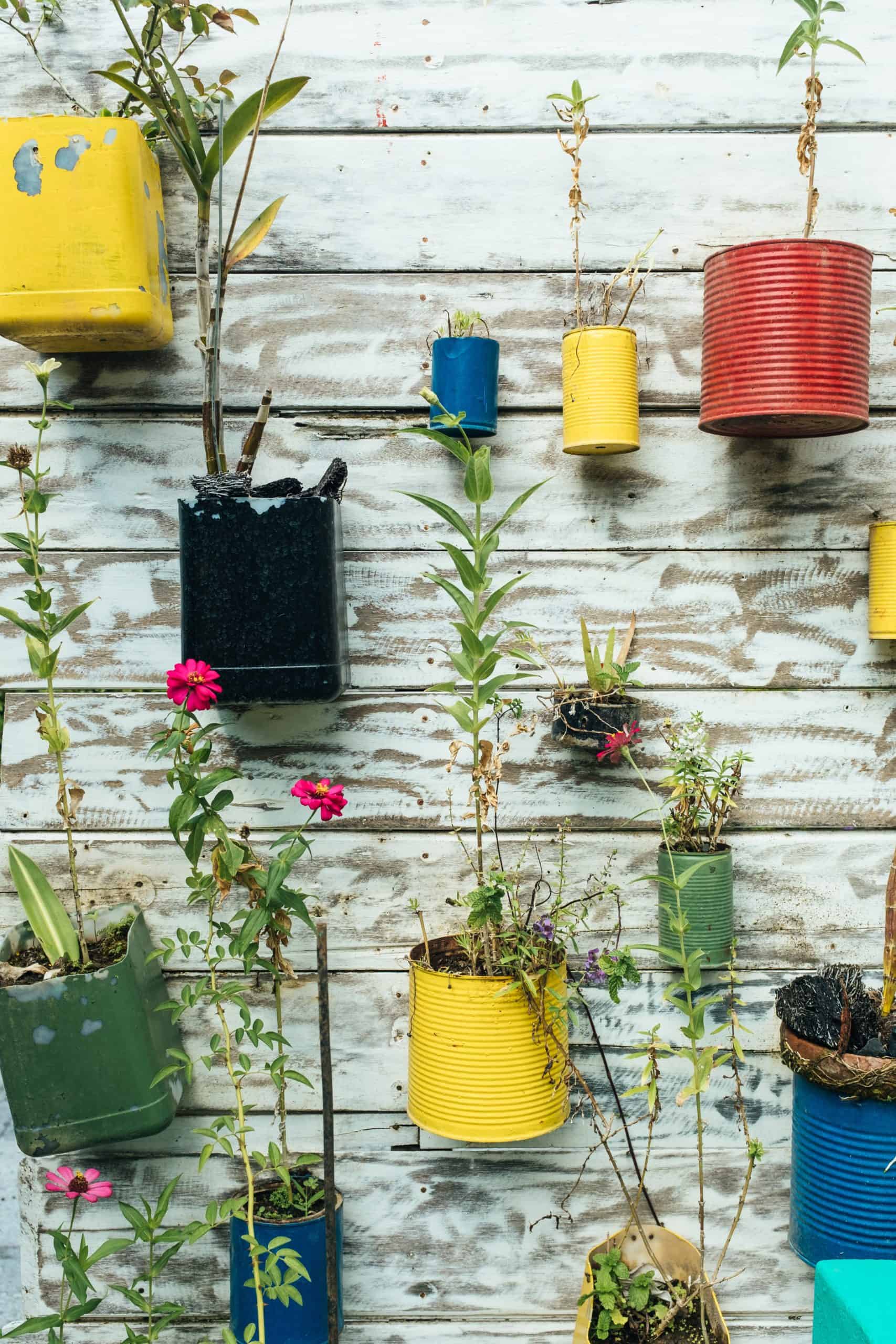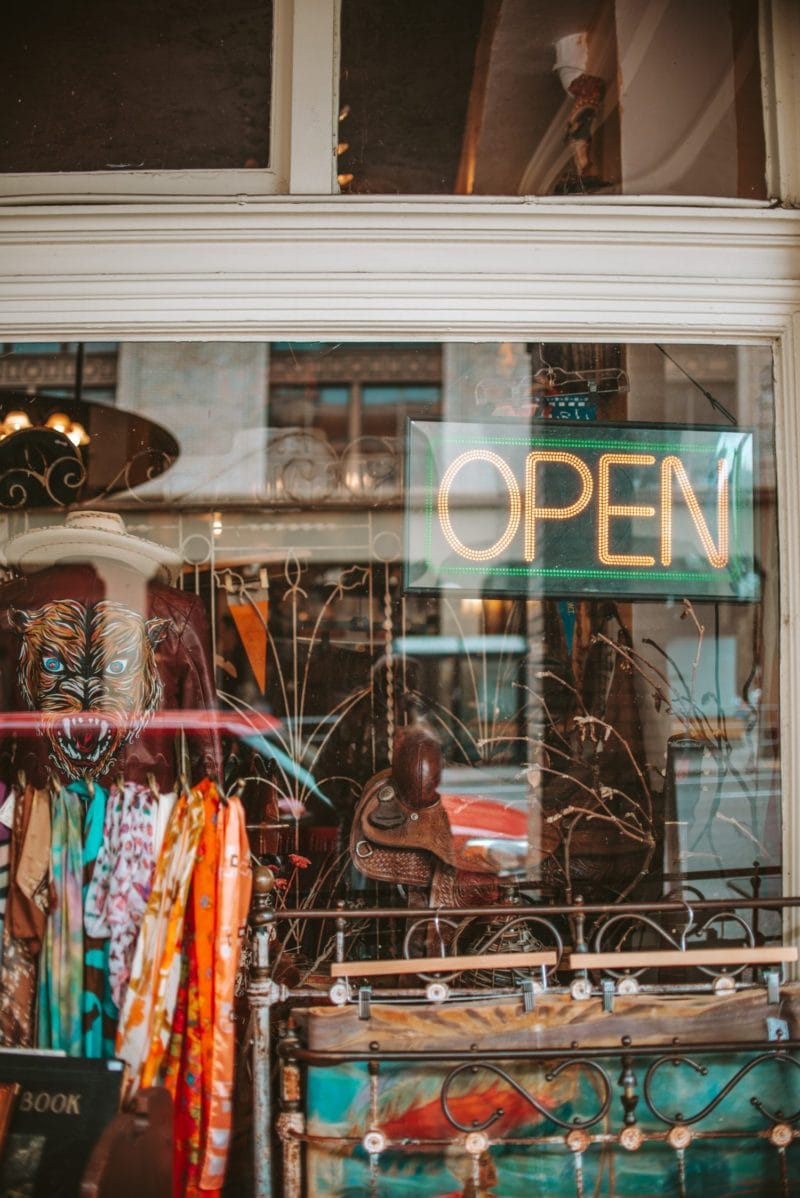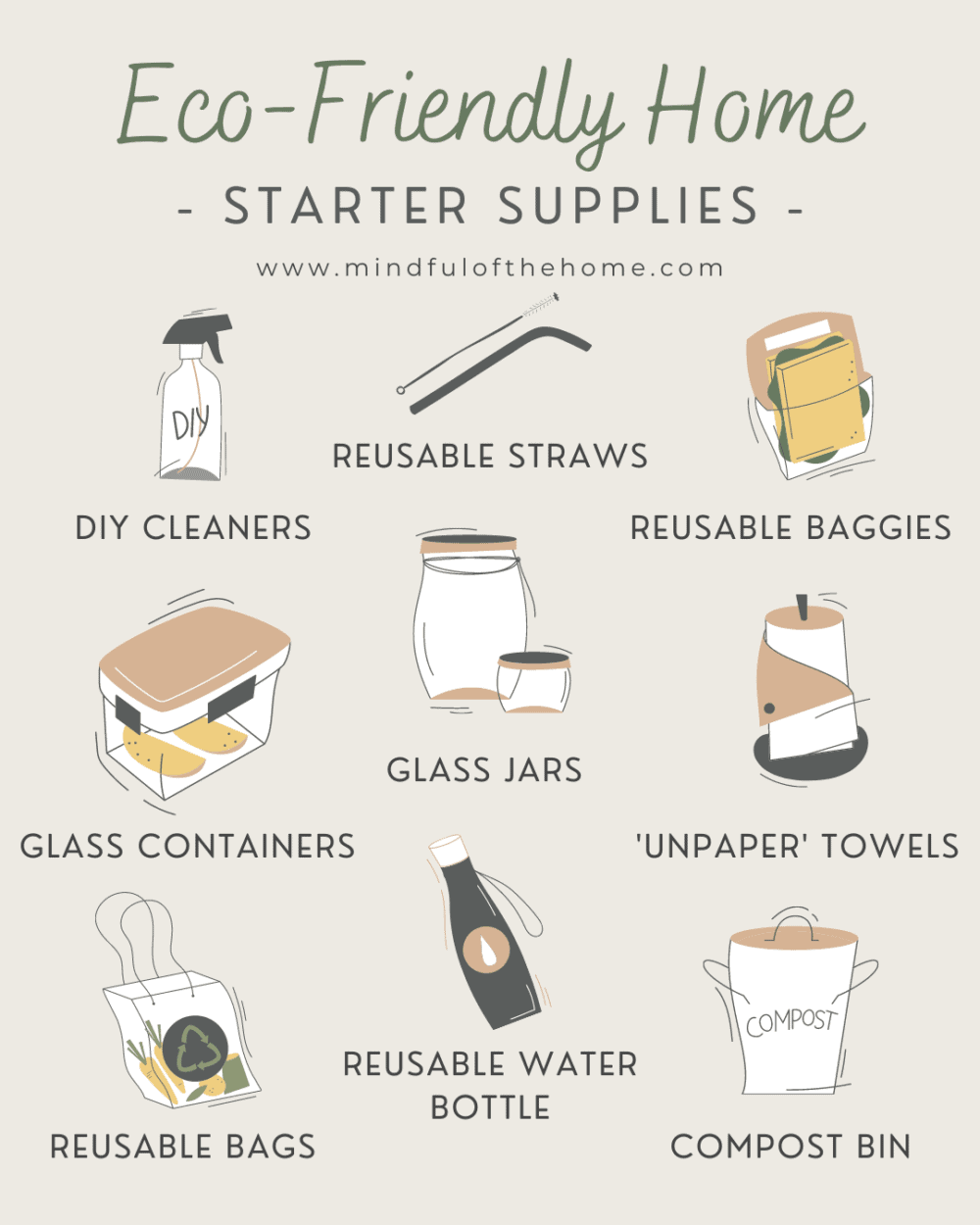Did you know that there are many simple ways that you can create a more eco-friendly home that will help make your life and the environment a better place?
To reducing your carbon footprint, creating less waste, and focusing on sustainability, living a greener lifestyle and creating a more green home is something everyone should aspire to become better at.
And really, living more environmentally friendly is easier than you might think.
You just need to start implementing more mindful decisions about your actions inside of your home, the products you allow into your home, and how you dispose of those products afterward.
Whether you decide to implement all of these eco-friendly lifestyle tips or even just a few is up to you.
Even just devoting yourself to being consistent with a couple of these green habits will make a difference and create a positive change for our planet.
But really, the more lifestyle changes you make, the better!
This post contains affiliate links which means I may receive a commission at no extra cost to you should you click through and make a purchase.

30 tips for creating an eco-friendly home
1. Become more self-sufficient by growing your own food through gardening and homesteading. Even just having a little herb garden is great!
2. Invest in sustainable products like glass, stainless steel, or bamboo for your home. Buy your eco-friendly products from this ethical marketplace where everything is vetted for sustainability.
3. Use reusable grocery bags instead of taking plastic bags from the store. If you must use these bags, wash them and keep reusing them at home!

4. Use reusable water bottles and coffee mugs instead of using disposable plastic bottles and coffee cups. Neither are recyclable.
5. Don’t buy disposables or single-use items like plastic cutlery, throwaway cups, plates, straws, etc. For an eco-friendly home, use reusables! See my post for a list of single-use plastics you should avoid and their zero-waste alternatives.
6. Use reusable straws made from glass, stainless steel, or bamboo. (And bring them with you when you’re travelling!)
7. Substitute plastic wrap for organic, biodegradable, and reusable beeswax food wrap, vegan food wraps, use food huggers, or just use containers! Opt for versatile glass containers that are microwave, oven, and dishwasher safe.

8. Stop buying plastic to reduce plastic pollution and create a more eco-friendly home. That means avoiding products made of plastic as well as avoiding products that are packaged in plastic. For example, you can buy toilet paper wrapped in paper instead of plastic. Here are some more easy ways to use less plastic at home.
9. Go vegan or even just lower your meat consumption to reduce your carbon footprint. Even just refraining from eating meat one day a week can help.
10. Don’t waste food that you buy, make, or grow yourself. This is so important when going green! See my post for 30 practical tips to reduce food waste.
11. Compost veggie/fruit peelings and scraps, old flowers and plants, egg boxes, paper, and leaves so that goodness can be returned to your garden!
12. Buy local as much as you can to support your local farmers and businesses. Shopping locally will help reduce your carbon footprint and oftentimes places like farmers’ markets have little to no packaging.

13. Buy in bulk to reduce the amount of packaging waste. Things like toilet paper, pet food, soap, etc.
14. Conserve energy by turning off or unplugging electronics when not in use. Turning off electronics like your television and computer monitor, and unplugging kitchen appliances that are only used every now and then is a great way to lower energy consumption.
15. Replace paper towels with an eco-friendly substitute like Swedish dishcloths! Although paper towels can be composted, they can’t if they’re covered in toxic cleaning products. Even just using regular dish towels to clean up messes is a lot more sustainable than paper towels since you can simply wash them and reuse them.
16. Create a zero-waste bathroom by focusing on reusable or biodegradable products. These plastic-free bathroom swaps save money and help the environment at the same time.
17. Create a zero-waste kitchen to reduce the amount of food waste and packaging waste you create. Here are some zero-waste kitchen tips to help you get started.
18. Use renewable energy such as solar panels to create your own energy and electricity. Think big like solar panels on your roof to power your home, or even small solar lights for your balcony or walkway.

19. Make your own cleaning products instead of buying toxic cleaners from the store. You can use natural ingredients and add scents with citrus, herbs, or essentials oils. Here’s a big list of homemade products you can make with essential oils.
20. Conserve water by not letting the faucet run, taking quick showers, saving warm-up water, etc. Read more easy water conservation tips to get started.
21. Drinking tap water that’s filtered instead of buying plastic water bottles is an awesome way to be eco-friendly at home. This is one of the easiest and best ways to be more eco-friendly because disposable water bottles account for a lot of litter in the world. Learn more.
22. Reuse and repurpose as much as you can, like finding ways to ways to repurpose glass jars and upcycling items into planter pots. Repurposing items is a great way to give them a new life.

23. Recycle anything you cannot reuse such as plastic, aluminum, and paper products. A goal you want to keep in mind when going green is to keep things out of landfills, and recycling is a great way to do that.
24. Fix and upcycle items that are broken instead of buying brand-new such as clothing, furniture, and electronics. This is a smart way to reduce your environmental impact.
25. Donate items you no longer need instead of throwing them away. As long as it is still in decent shape, you may be able to pass it along to extend its lifecycle.
26. Shop secondhand when you can for things like decor, clothing, furniture, picture frames, TVs, etc. Here’s a list of the best online thrift stores.

27. Buy high-quality clothing so that your clothes will last longer, and take care of your clothing! An eco-friendly home needs to have a sustainable wardrobe!
28. Plant trees and support brands and communities who do. Check out these brands that plant trees when you make a purchase.
29. Buy less stuff in general by embracing a more minimalist lifestyle. Less stuff means less manufacturing and less garbage.
30. Go paperless by using electronic versions of books, receipts, etc.
Final thoughts on creating a sustainable home
All of these ideas will not only help create positive change for your home and our planet, but it’s also a great way to save money over time.
A lot of eco-friendly living substitutes are made to last longer, so you end up buying less in the long run.
You’re being more sustainable by reusing in as many ways as you can instead of buying new stuff and saving money. It’s a win-win!
A big part of creating an eco-friendly home is learning how to become a more conscious consumer. By conducting research and asking a few ethical questions about the product and brand, you’re helping shape the future by choosing.
Check out my post Conscious Consumerism: 10 Ways to be a Mindful Shopper for some easy tips so you can get started today!
Share these eco-friendly home tips or save them for later!





[…] If you want to learn even more ways to be sustainable, check out my post with 30 tips for creating an eco-friendly home. […]
I really liked the idea about reusable straws. The consumption of straws is very high which leads to more plastic waste. A bamboo straw is a good alternative here. Minimalist lifestyle is what we all should focus in order to go ahead with the Go Green initiative.
I love that you talked about planting more trees around your property so that you can reduce your energy bills and help the air around your home. My family is trying to be much more eco-friendly and will take new ideas to accomplish this. I will pass your article over to everyone so we can all get on the same page and make a plan to do our part in saving the planet.